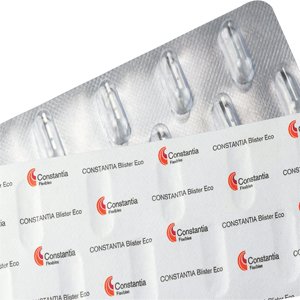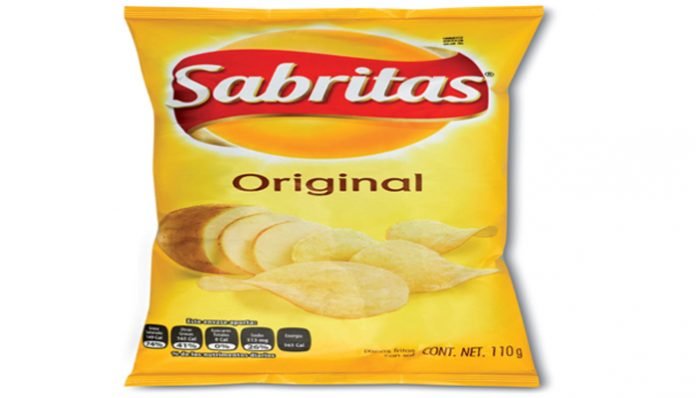Traditions, culture, habits, economics, and climate are some of the factors that influence the eating habits and medicinal intake of an individual. These factors play a major role in the packaging of products as well. As a globally operating manufacturer of flexible packaging solutions, Constantia Flexibles is familiar with the range of consumer preferences and supplies the right packaging to all.
Alexander Baumgartner, chief executive officer at Constantia Flexibles, explains that there are two main reasons why packaging might vary significantly between different countries or continents: “On one hand, there are countless varieties of products that must adhere to a set of demands such as shelf life, opacity, and impermeability to oxygen, including favorable conditions for transport and storing. It should also be distinct from the products manufactured by other brands. Hence, one must come up with versatile packaging alternatives.”
Flexible packaging is being accepted globally. “Flexible packaging is adaptive to any climatic or cultural requirements. It also complies with customer requests – using the resources effectively and in an eco-friendly manner,” concludes Baumgartner. It has taken time for this trend to cement its place in the market.
From no packaging to rigid packaging and flexible packaging
Having been virtually non-existent for much of human history and tradition, with regard to individually packaged products, packaging has now evolved from using rigid containers such as glass to developing flexible packaging solutions.
But as Nikolaus Wolfram, senior vice president, Corporate Development, Innovation & Marketing at Constantia Flexibles, explains, developments in packaging did not proceed uniformly around the world. He says, “Europe is rather oldfashioned in this respect. While in the emerging markets and Russia, the trend has shifted from no packaging to rigid packaging and then flexible packaging., European consumers still prefer rigid packaging for certain products.”
The difference in preferences can be observed through ketchup packaging. In Russia, ketchup is usually packaged in flexible pouches or in single-serve portions, while in Europe, it is common to see ketchup in tubes made of plastic or in glass containers. This also applies to baby food.
Tablets in glass bottles
An example of the importance of consumer habits comes from the pharmaceutical industry. All over the world, tablets are packed in blister packs – display package with aluminum foil as back cover. However, the United States remains an exception. In the US, tablets are sold in glass or plastic bottles even though blister packs are safer and hygienic. According to Wolfram, it also has to do with the way in which medicines are disbursed in the US, “Drugs are prescribed in certain quantities, and the pharmacist then counts the tablets and fills them into a glass or plastic bottle. This system doesn’t exist anywhere else in the world.”
“It’s especially difficult to implement innovations in the area of pharmaceutical products. This is due to the extremely complicated approval processes for new packaging and partly to the fact that consumers of health care products tend to prefer existing packaging options,” says Wolfram. However, consumers might also prefer one type of packaging over another for reasons of economy.
Packaging in individual portions
A very interesting trend in packaging is currently being observed in India, where traditionally, items were left either unpackaged or packaged in bulk (for instance industrial-sized big bags). “The trend of individual packaging comes from the economical structure of the country. Workers in India are often paid on a daily basis, meaning that they only receive a few rupees at a time. It’s impossible to shop in bulk under such circumstances. That is the reason why products like shampoo are sold in single portion pouches” Wolfram said. Apart from human factors, nature also has a hand in packaging.
When your bag of chips burst at 3,000 meters
While designing packaging materials, the regional climate is one of the factors to consider. For example, the barrier properties of materials used in packaging must be different in humid tropical climates compared to regions that are dry and cold, to protect the products against moisture and wetness.
Extreme differences in altitude are also significant. Wolfram describes: “Let’s take a bag of chips, for example. In Mexico, the bag has to have different properties than in the US, since many heavily populated areas such as Mexico City are located more than 2,000 meters above sea level. A chips bag manufactured for the US market could burst at that altitude because of the difference in air pressure.”
Identifying and responding to trends
While developing packaging solutions, one way to find the right option for a particular country or region is to review market studies from third parties containing demographic data, such as on level of urbanization or to obtain information from Constantia Flexibles customers, most of whom are spread worldwide. Information is also available internally. “Since our locations are spread out all over the world, our employees in the respective markets are also able to give us useful information.” notes CEO Baumgartner. In any case, the customers’ need take top priority.
Customized solutions for each and every customer
Once the customer’s needs have been identified, the packaging is adapted with respect to both its technical properties suiting tropical climates and shape and size of the package.
In markets with high levels of competition, brands cannot afford to do without unique selling propositions (USPs) to distinguish themselves from competing brands. Special eye-catching packaging is perfect for this: “We create our packaging based on our customers’ requests. Usually, each type of packaging ends up being custom manufactured to meet the requirements of the market, requirements that are constantly changing, of course,” says Baumgartner.
A glance into the future
Current trends in packaging vary from country to country and continent to continent. In Asia, especially India, emphasis is on the recyclability of packaging. Although the trend of sustainable materials management in packaging began in Europe, sustainable or recyclable packaging is being demanded by Asian society and policymakers alike in a scope that cannot be found in Europe. However, recent months have seen some movement in European countries on this front.
Especially in countries, where online shopping is increasing in popularity, the question about the future role of packaging is also arising. Wolfram said, “Online shopping is having an impact on packaging. We just don’t yet know precisely how this will play out. At present, packages are being designed for optimum fit and visibility on supermarket shelves encouraging spontaneous purchases. While shopping online, buying decisions are not made based on packaging but on various online advertising options such as video clips. Even though a product’s packaging is of lesser consideration while purchasing online, the experience of opening the package may be important. This could change the shape and size of packaging.”
Constantia-Parikh capacity growth on target
The Constantia Flexibles group acquired a 60% stake in Ahmedabad-based Parikh Packaging in 2013. At the time, Constantia’s chief executive officer said, “The acquisition has helped it enter a highly attractive growth market as India’s middle class population has been showing keen interest in purchasing packaged food and healthcare products.”
The acquisition aimed at increasing the installed capacity at Parikh from 850 tons to 1250
tons per month. Considerable expansion of capacity including the addition of gravure presses in the past four years, has put Parikh very close to this target.
 The Indian company has been considerably strengthened by the Constantia group and is currently one of the leading flexible packaging printers in the country looking optimistically at the huge potential of the Indian, South Asian and Asian markets. Moreover, there are plans to build a new plant near Parikh’s existing plant in Ahmedabad for another expansion project that is likely to include both wideweb CI flexo as well as gravure production workflows.
The Indian company has been considerably strengthened by the Constantia group and is currently one of the leading flexible packaging printers in the country looking optimistically at the huge potential of the Indian, South Asian and Asian markets. Moreover, there are plans to build a new plant near Parikh’s existing plant in Ahmedabad for another expansion project that is likely to include both wideweb CI flexo as well as gravure production workflows.
Constantia Parikh mainly produces snacks and chips packaging, stand-up pouches, singleunit shampoo sachets and a variety of roll stock and laminate materials for flexible packaging. The company is ISO 9001:2000, ISO14001, OHSAS18001 and BRC-IoP certified.
Constantia Flexibles meanwhile has over 4,000 food, pharma and label customers worldwide. It has 10,000 employees in 55 production locations in over 23 countries that are committed to the supply of innovative flexible packaging solutions on a global level











